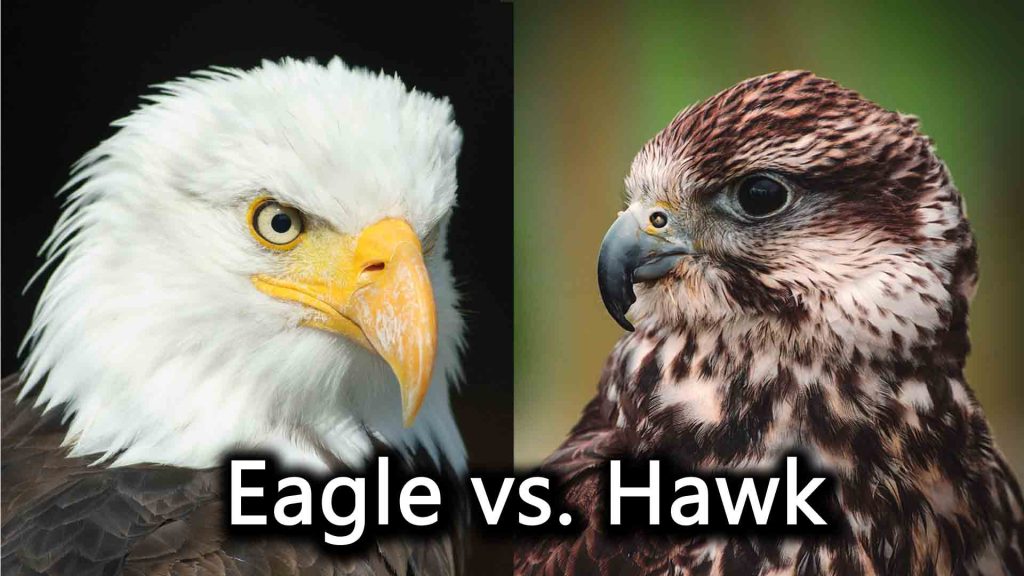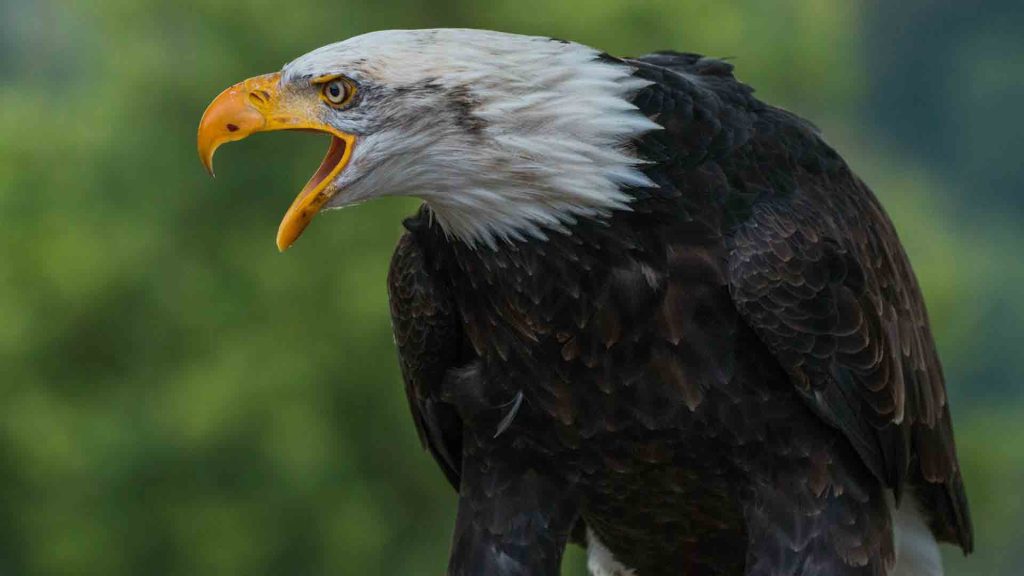Introduction
Birds of prey, with their majestic flight and keen hunting abilities, have always fascinated humans. Among these magnificent creatures, eagles and hawks stand out prominently. While they share similarities in their roles as predators, they also exhibit distinct differences in terms of size, coloration, and various other characteristics. This blog aims to delve into the nuanced disparities between eagles and hawks, providing a comprehensive guide for bird enthusiasts and nature lovers.

What is the Difference: (Eagle vs. Hawk)
Eagles have longer wingspans and are significantly larger than hawks. Although hawks look similar, closer inspection reveals that their wings are typically rounder, and they have stocky builds and short, broad, rounded tails. Eagles have a tendency to appear larger overall, with more angular wings that are sometimes referred to as “plank-like,” and a heavier overall appearance. Taking advantage of thermals—rising columns of warm air—hawks and eagles soar to great altitudes. As opposed to eagles, which soar with flat or only slightly raised wings, hawks occasionally soar with their wings held in a dihedral, or shallow v-shape.
Size Difference Between Eagle and Hawk?
One of the primary distinctions between eagles and hawks lies in their sizes. Eagles are generally larger.1 than hawks, showcasing impressive wingspans and robust builds. The size disparity is often noticeable, especially when observing these birds in flight or perched on a vantage point.
| Feature | Eagle | Hawk |
|---|---|---|
| Size | Larger.1 | Smaller |
| Wingspan | Impressive | Moderate |
| Build | Robust | Agile |
The table above encapsulates the size-related differences, providing a quick reference for enthusiasts eager to distinguish between these raptors.

Plumage Palette: Exploring Color Variation (Eagle vs. Hawk)
While both eagles and hawks showcase a range of colors, there are distinctive variations that aid in identification. The plumage of eagles tends to be more solid and bold, often featuring dark browns, blacks, and whites. Hawks, on the other hand, may exhibit more varied patterns, including speckles and stripes.
| Feature | Eagle | Hawk |
|---|---|---|
| Plumage Color | Dark browns, blacks, whites | Varied patterns, speckles, stripes |
| Eye Color | Yellow, brown | Yellow, red, orange |
It is important to note that these colorations can vary within species, making it crucial to consider multiple characteristics when identifying these birds.
Hunting Technique Difference Between Eagle and Hawk?
Both eagles and hawks are formidable hunters, but their hunting techniques and preferences differ. Eagles are known for their powerful talons2, which they use to snatch prey, often larger than what hawks typically target. Hawks, on the other hand, are renowned for their agility in flight and may employ different hunting strategies, such as hovering before swiftly descending to catch smaller prey.
| Feature | Eagle | Hawk |
|---|---|---|
| Talon Strength | Powerful | Strong, agile |
| Prey Size | Larger prey | Smaller prey |
| Hunting Style | Swift descents, powerful grabs | Agile flight, precision |
Understanding their distinct hunting styles is crucial for appreciating the ecological roles these birds play in maintaining a balanced ecosystem.

Habitat Preferences: Where Eagles Soar and Hawks Hover
The choice of habitat is another factor that sets eagles and hawks apart. Eagles often prefer expansive territories with access to large bodies of water, as they are known to feed on fish. Hawks, meanwhile, exhibit a broader range of habitat preferences, adapting to environments ranging from forests and grasslands to urban areas.
| Feature | Eagle | Hawk |
|---|---|---|
| Habitat | Large territories, water bodies | Diverse habitats, including urban |
| Nest Location | High cliffs, tall trees | Trees, buildings, utility poles |
| Social Behavior | Solitary or in pairs | Social, may form colonies |
Observing the habitat preferences can offer valuable insights into the ecological niches occupied by eagles and hawks.

Vocalizations: (Eagle vs. Hawk)
Birds communicate through various vocalizations, and eagles and hawks are no exception. While both produce distinctive calls, the frequencies and patterns of these vocalizations differ between the two.
| Feature | Eagle | Hawk |
|---|---|---|
| Call Frequency | Infrequent, high-pitched | More frequent, varied pitches |
| Communication | Mates, territorial warnings | Social interaction, hunting signals |
Understanding the nuances of their calls can enhance the bird-watching experience, allowing enthusiasts to identify these raptors from a distance.
Conclusion
In summary, eagles and hawks, despite belonging to the same family of birds, exhibit notable differences in size, coloration, hunting techniques, habitat preferences, and vocalizations. These distinctions are essential for bird enthusiasts, naturalists, and researchers alike, offering valuable insights into the diverse world of raptors.
As we’ve explored in this comprehensive guide, eagles and hawks each bring a unique set of characteristics to the skies, contributing to the rich tapestry of avian diversity. Whether soaring majestically on expansive wings or executing precise aerial maneuvers, these birds continue to captivate and inspire those who appreciate the wonders of the natural world.
By keeping these differentiating factors in mind and referring to the provided table, bird enthusiasts can enhance their ability to identify and appreciate the majestic eagles and hawks that grace the skies.
References
- Brown, L., & Amadon, D. (1989). Eagles, Hawks and Falcons of the World. Wellfleet Press.
- Ferguson-Lees, J., & Christie, D. A. (2001). Raptors of the World. Houghton Mifflin Harcourt.